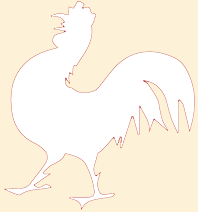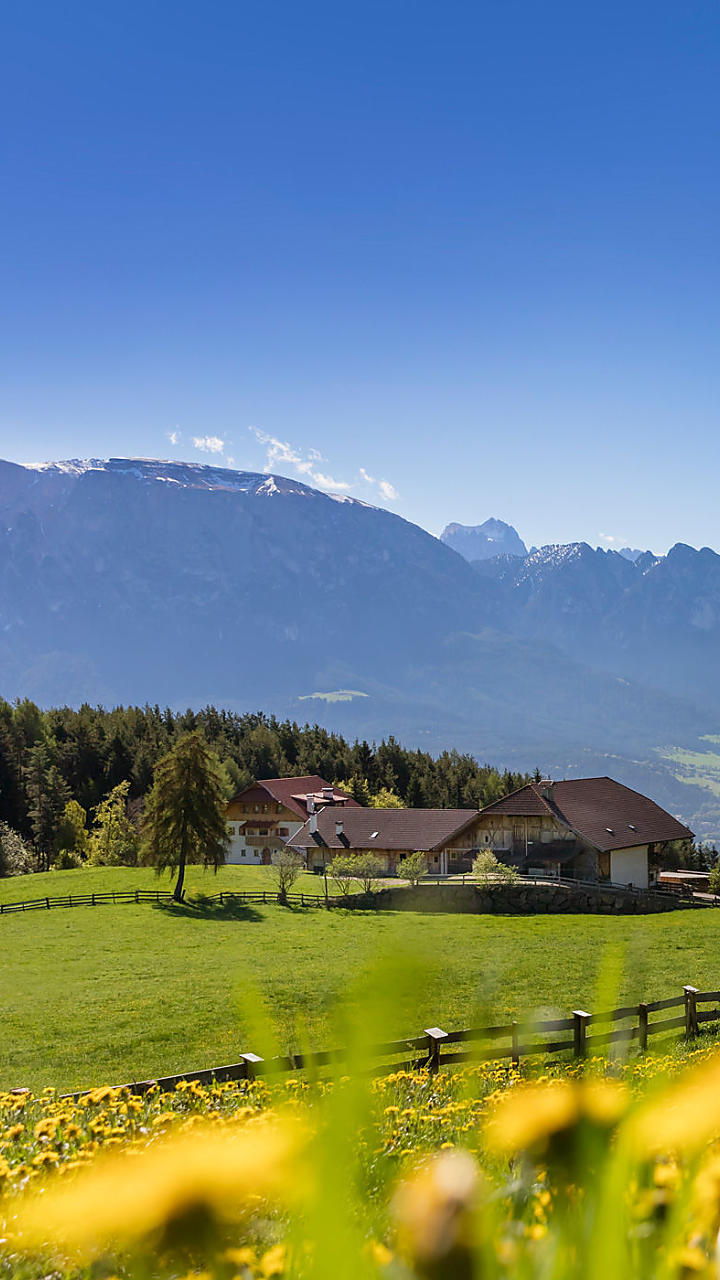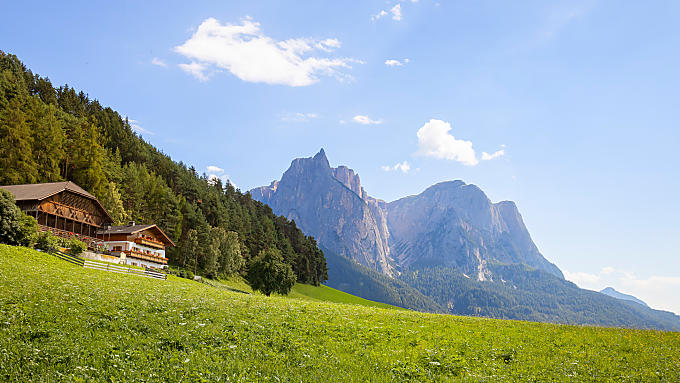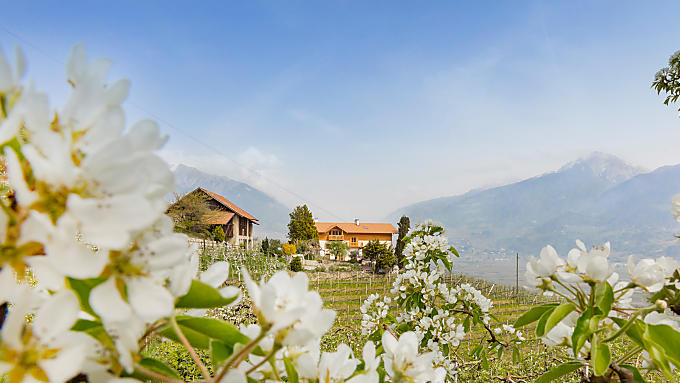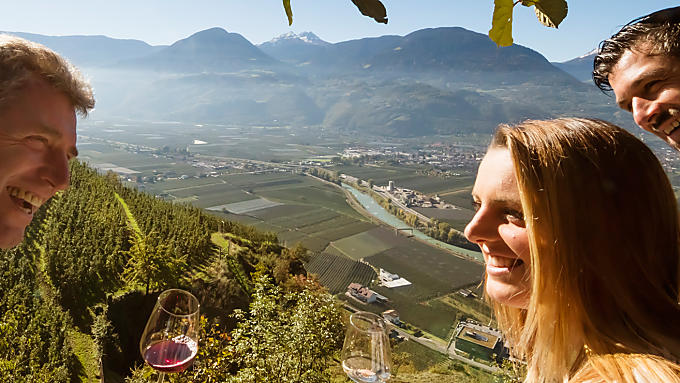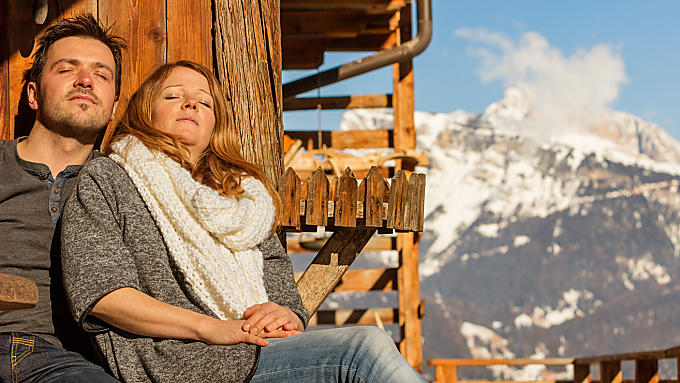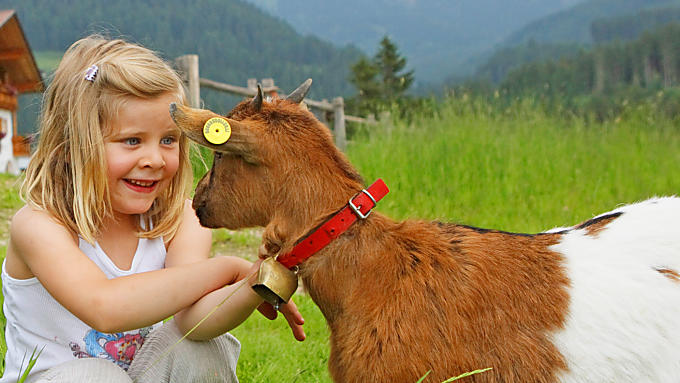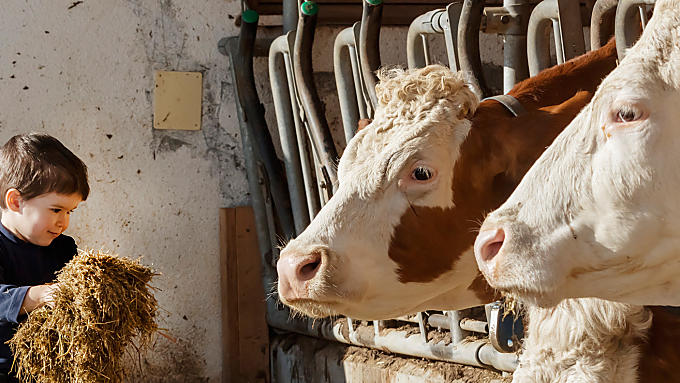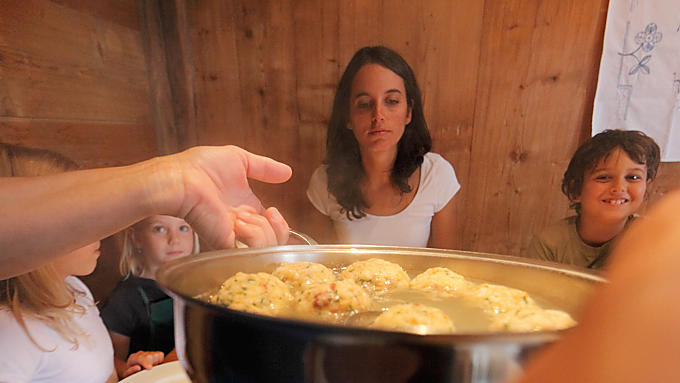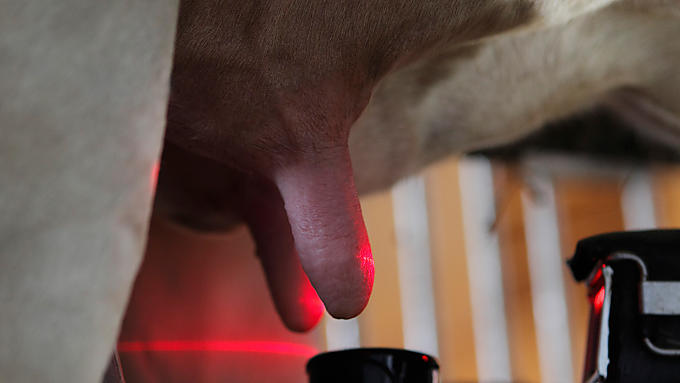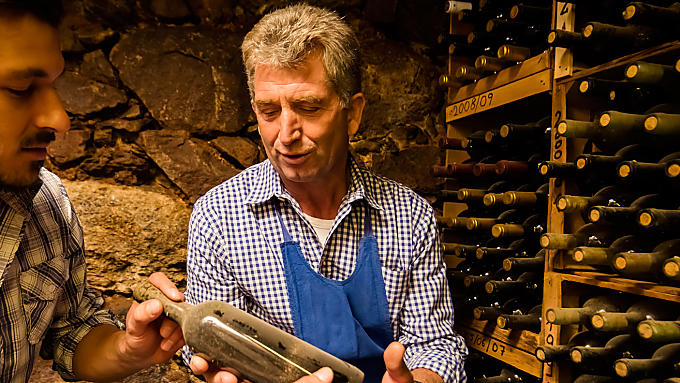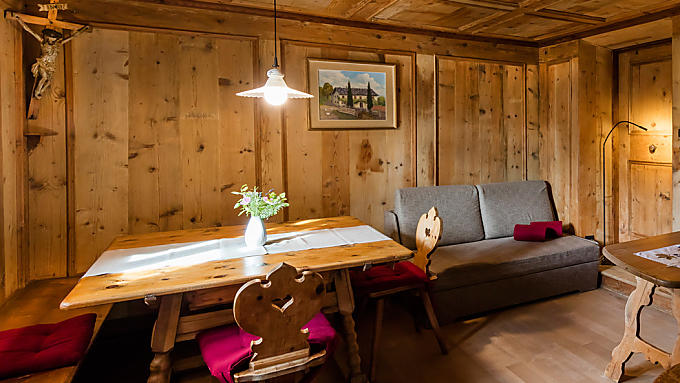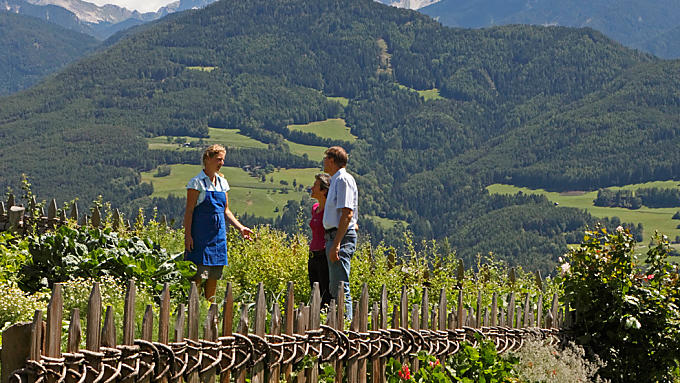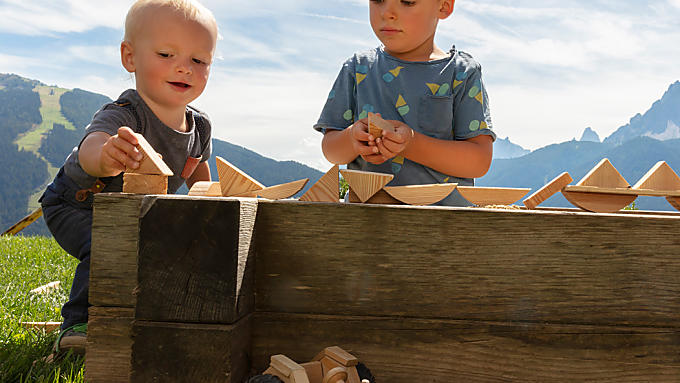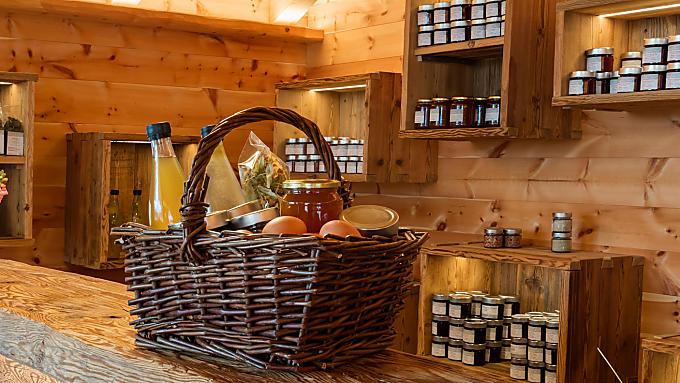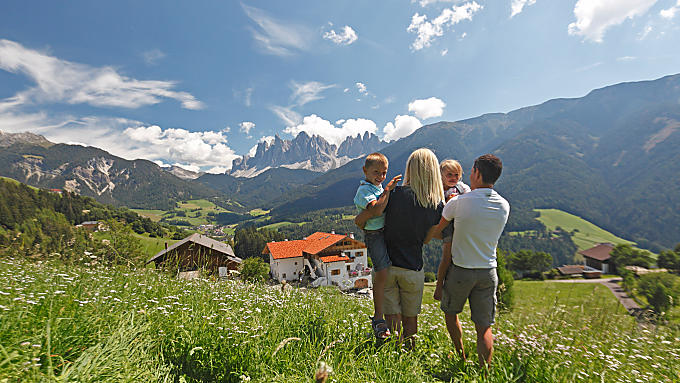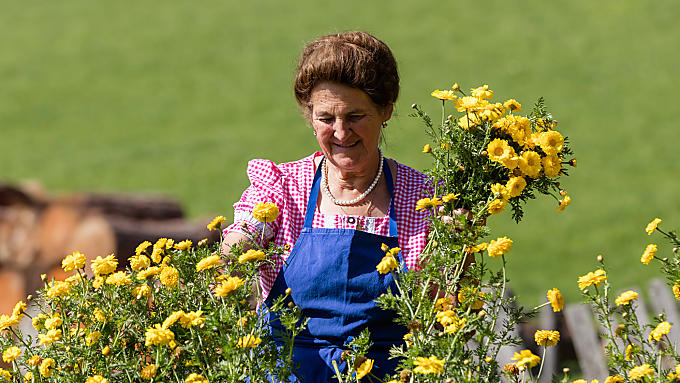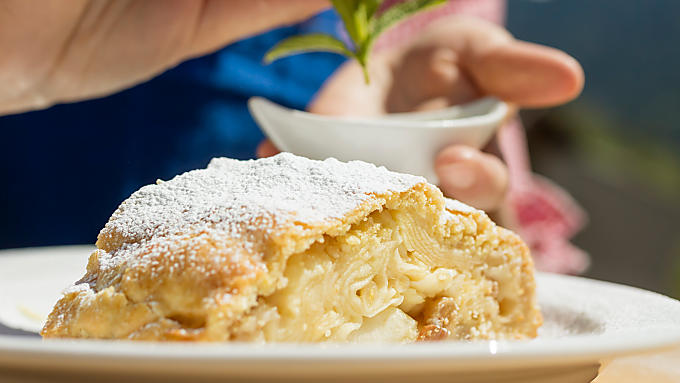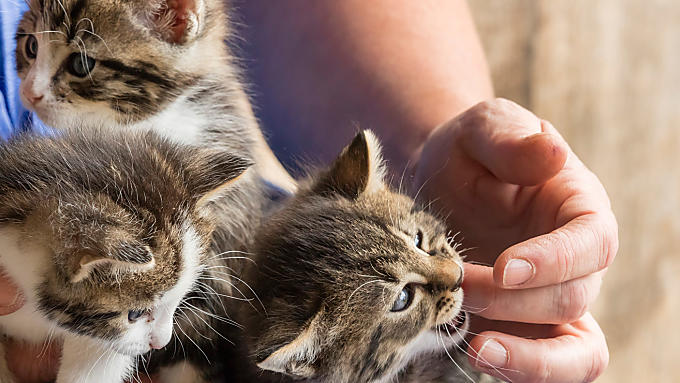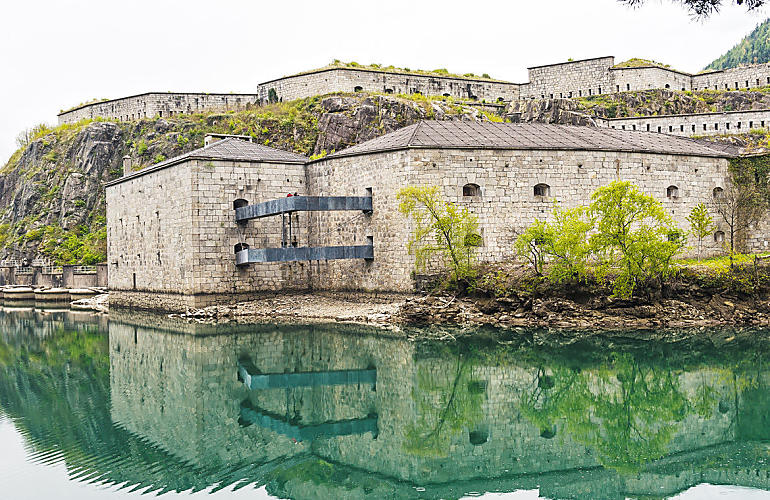
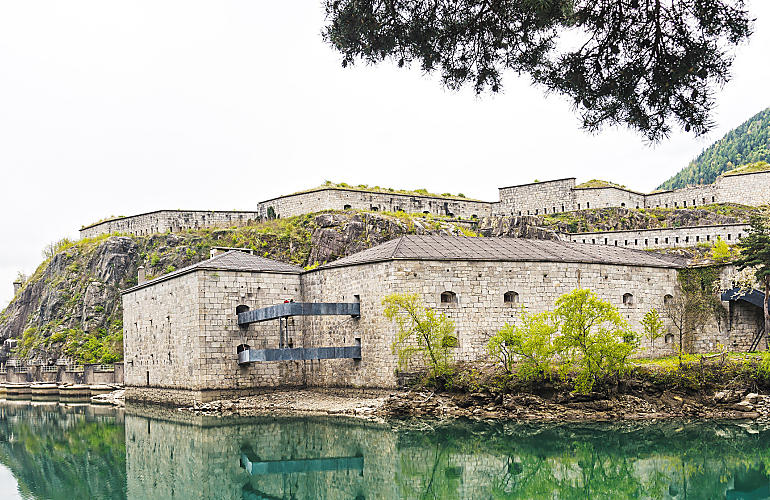
The modern fortress
Holiday location
Farm Holidays in Franzensfeste
On a Farm Holiday in Franzensfeste, the eye is drawn to the once-mightiest fortress in Europe. Nowadays, it is a meeting point for present and past.
The municipality of Franzensfeste has always been an important intersection point thanks to its strategic position. The Amber Road once passed through here. It was via this trade route that goods such as sought-after amber from the north reached the area around the Mediterranean. Today, holiday flats in the village of Franzensfeste make a great base for excursions in Wipptal, Eisacktal or Pustertal valleys. Cyclists can take the Brenner-Bozen Cycle Path, which leads from the Brenner Pass to the province capital of Bozen over a stretch of 96 kilometres.
On a Farm Holiday in Franzensfeste, the eye is drawn to the once-mightiest fortress in Europe. Nowadays, it is a meeting point for present and past.
The municipality of Franzensfeste has always been an important intersection point thanks to its strategic position. The Amber Road once passed through here. It was via this trade route that goods such as sought-after amber from the north reached the area around the Mediterranean. Today, holiday flats in the village of Franzensfeste make a great base for excursions in Wipptal, Eisacktal or Pustertal valleys. Cyclists can take the Brenner-Bozen Cycle Path, which leads from the Brenner Pass to the province capital of Bozen over a stretch of 96 kilometres.
Franzensfeste lies in a remote spot and yet is easy to reach. Together with the hamlets of Mittewald, Grasstein and Oberau, this little municipality will provide guests with some peace and quiet, without being too out of the way.
Party location with history
The striking feature of the municipality of Franzensfeste is the fortress bearing the same name. Past and present regularly meet up here on its 65,000-metre-square site. The gigantic labyrinth at Franzensfeste featuring twisty rooms, corridors and steps is now one of a total of ten South Tyrolean provincial museums. Since 2005, the premises have been used for cultural events on a number of occasions. At concerts and open-air festivals, young visitors can dance within old walls that were once constructed by the Habsburg family.
Emperor Franz I of Austria, who lent Franzensfeste its name, had a huge construction built in 1833, which was completed in just five years. At the time, this massive bulwark of granite blocks was considered the most powerful fortress in Europe. Its strength was never actually put to the test, however: Franzensfeste fortress was never the scene of war, but served mainly as a depot for weapons and explosives. It became famous because Italy kept gold reserves here during the Second World War. A large part of that gold has come to be regarded as lost without a trace since the end of the war.
The permanent exhibitions and most of the fortress may be visited independently on a holiday in Franzensfeste. The hidden spots of Franzensfeste may only be seen during a guided tour.
Franzensfeste lies in a remote spot and yet is easy to reach. Together with the hamlets of Mittewald, Grasstein and Oberau, this little municipality will provide guests with some peace and quiet, without being too out of the way.
Party location with history
The striking feature of the municipality of Franzensfeste is the fortress bearing the same name. Past and present regularly meet up here on its 65,000-metre-square site. The gigantic labyrinth at Franzensfeste featuring twisty rooms, corridors and steps is now one of a total of ten South Tyrolean provincial museums. Since 2005, the premises have been used for cultural events on a number of occasions. At concerts and open-air festivals, young visitors can dance within old walls that were once constructed by the Habsburg family.
Emperor Franz I of Austria, who lent Franzensfeste its name, had a huge construction built in 1833, which was completed in just five years. At the time, this massive bulwark of granite blocks was considered the most powerful fortress in Europe. Its strength was never actually put to the test, however: Franzensfeste fortress was never the scene of war, but served mainly as a depot for weapons and explosives. It became famous because Italy kept gold reserves here during the Second World War. A large part of that gold has come to be regarded as lost without a trace since the end of the war.
The permanent exhibitions and most of the fortress may be visited independently on a holiday in Franzensfeste. The hidden spots of Franzensfeste may only be seen during a guided tour.
Farm search
Holiday farms in Franzensfeste
3 reasons
A holiday in Franzensfeste
Franzensfeste fortress:
museums and exhibitions
A dip into limpid
Puntleider See lake
Enjoy a beer
in Sachsenklemme gorge
Beer with Andreas Hofer
The so-called 'Sachsenklemme' gorge nearby the municipality of Franzensfeste has also achieved historical significance. In this particularly narrow part of the valley, Andreas Hofer, the South Tyrolean freedom fighter, succeeded in ambushing French troups and forced them to surrender.
The so-called 'Sachsenklemme' gorge nearby the municipality of Franzensfeste has also achieved historical significance. In this particularly narrow part of the valley, Andreas Hofer, the South Tyrolean freedom fighter, succeeded in ambushing French troups and forced them to surrender.
Since 2009, the year commemorating Andreas Hofer, there has been a brewery making its own Andreas Hofer beer in this historic place, too. The fortress has left its mark on the municipality. Yet there is even more to discover on a holiday in Franzensfeste. Puntleider See lake is a popular destination with families in particular. Between arolla pine, larch and spruce trees, locals and guests gather on the mountain pasture of the same name, which also serves food and drink. A trip to 'Hohe Festung' climbing garden will provide a little more action. Beginners may try climbing on the granite rock not far from Franzensfeste fortress.


